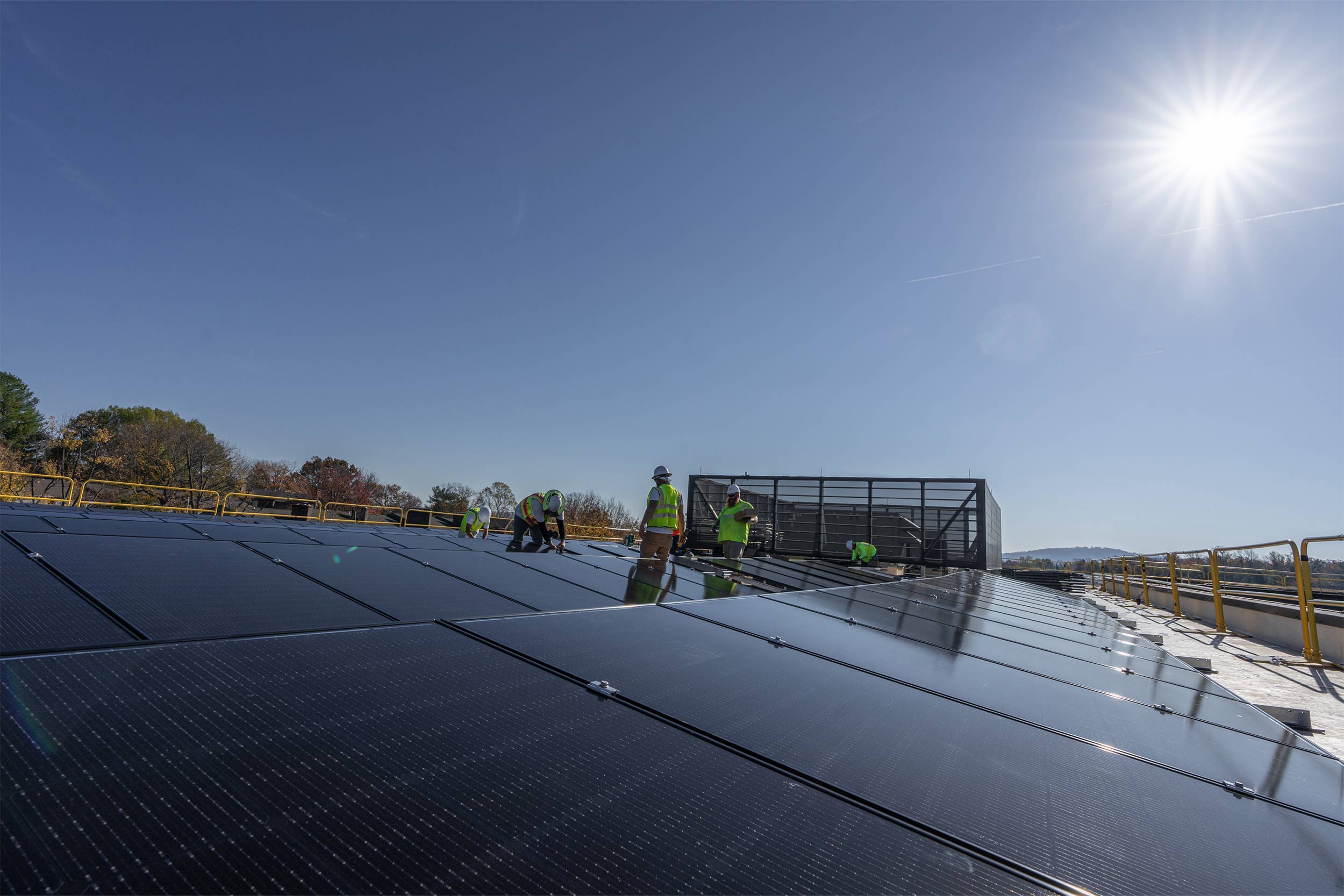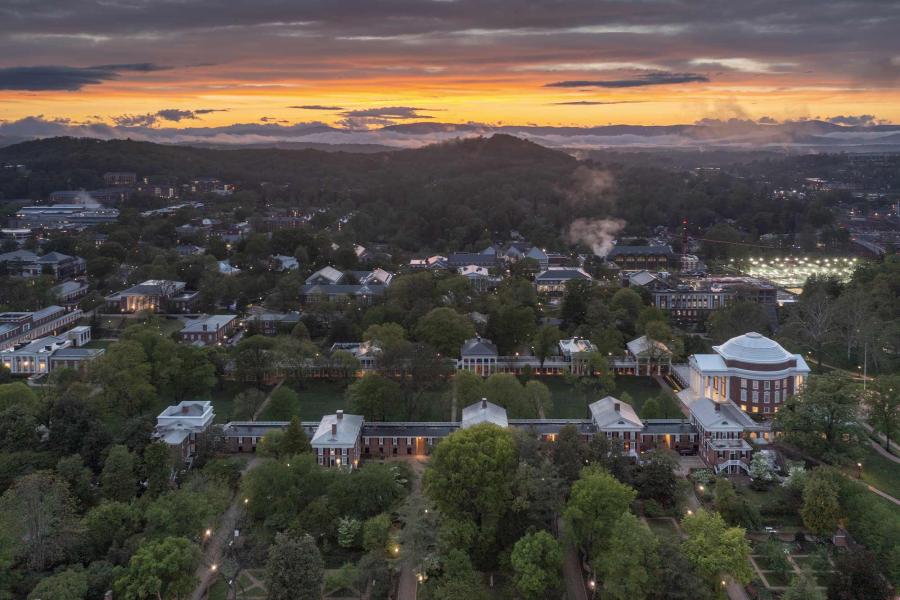“The Data Science project is very small, as the roof space conducive to solar is small,” Sathish Anabathula, associate director of power and light for UVA Energy and Utilities, said.
The University has contracted with Tiger Solar to install a 208.12-kilowatt system on the Old Ivy Road structure, which will provide approximately 27% of the building’s electric draw. The roof-mounted panels feed directly into the building, using an inverter to translate direct current into a usable alternating current. Each solar panel has 72 cells converting solar energy to electricity. The solar-generated current, and the current generated by Dominion Energy, feed the building’s electric needs.
“Think of it as a bucket of water filling from two taps, the bigger tap from the utility and the smaller tap from the building’s solar array, and you are drawing water from the bucket,” Anabathula said. “The way most of our buildings work, much of the load is in the heating and cooling of the building as well as the computers and servers, so the buildings never go to zero electric draw.”
The buildings have meters that constantly monitor how much electricity is coming in from the utility and the solar array, as well as how much is being used in the building. When the solar array provides enough to satisfy the building’s demands, the meter turns off the feed from the utility; any excess electricity it generates is sent onto the electric grid and the meter runs backward.
“If we don’t use it, we’re sending it back to the grid,” Anabathula said. “But it is very few times where we’re spinning the utility meter backward. Our electric bill is based on a month duration, so if the meter is spinning forward five days out of the week and spinning back just a little bit a couple of days in a month span, we’re still consuming. Technically, we’re not selling anything back to the grid, just reducing the bill.”
And the reduction is less per unit than what the University is paying.
“If we buy electricity at 10 cents per unit, about 4 or 5 cents of that is the production cost,” Anabathula said. “The other 5 or 6 cents is the distribution, maintenance and all the costs that are associated with it. When you over-produce and you’re selling units back to the power company, they are not going to pay you 10 cents, which they charge you for the usage, they are going to pay you at 4 or 5 cents.”








